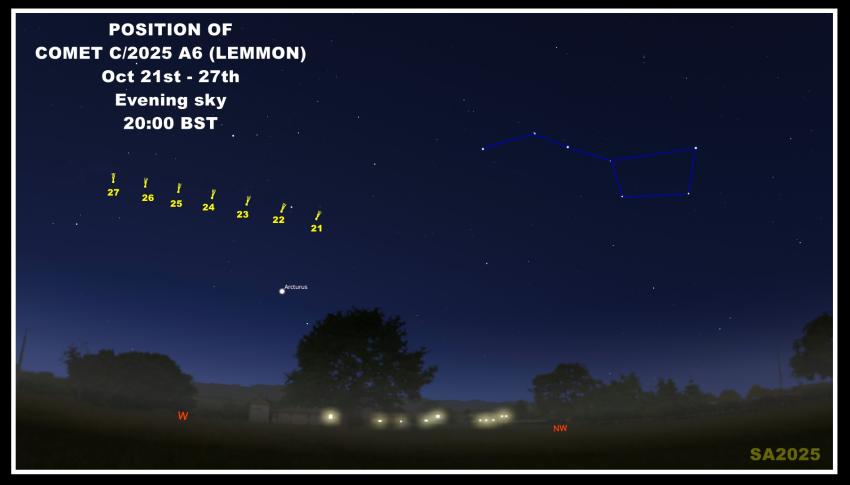Grab your binoculars and telescopes because the best comet to view from Earth in 2025 will make its closest approach his week.
Comet C/2025 A6 (Lemmon), which was discovered in January this year, may even be visible with the naked eye for observers with a very dark sky.
It will be nearest to our planet on 21 October, closest to the Sun around 4 November and won't return for another 1,300 years.
"Comet Lemmon is pretty much at its best visibility right now," said Dr Robert Massey, deputy executive director of the Royal Astronomical Society.
"The best place to look is in the evening sky. As the sky darkens the comet will first of all be moving, over a matter of days, past the bright star Arcturus, and then further round towards the south west, beneath the stars of the Summer Triangle."
Sharing tips on how to spot it, he added: "It will stand out as a fairly bright, fuzzy object.
"It isn't going to be like Hale-Bopp was for those who remember it back in the late 1990s, or even NEOWISE in 2020, it's going to be a little tough to see with the eye.
"But, that said, it's a reasonably bright comet as they go. The fact that you can see it easily with binoculars makes it fairly unusual, and I think for that reason alone it's something to go and enjoy, particularly if you've never seen a comet before."
The appearance of Comet Lemmon coincides with the annual Orionid meteor shower, which is visible from 2 October to 7 November and peaks around 21 October.
Meteor showers occur when the Earth passes through a clump of debris in space, as our planet moves along its orbit around the Sun.
This particular one comes from the dust stream of Halley's Comet, which swings by the Earth only once every 75-76 years and is next due to appear in 2061.
When the meteors enter our atmosphere at high speed the friction as they pass through causes the air around them to heat up dramatically, resulting in a characteristic brief bright streak of light or 'shooting star'.
If you're lucky enough to get a picture of Comet Lemmon or the Orionids why not share it with us via our social media accounts. You can find us on Instagram, Bluesky, LinkedIn and Facebook.


